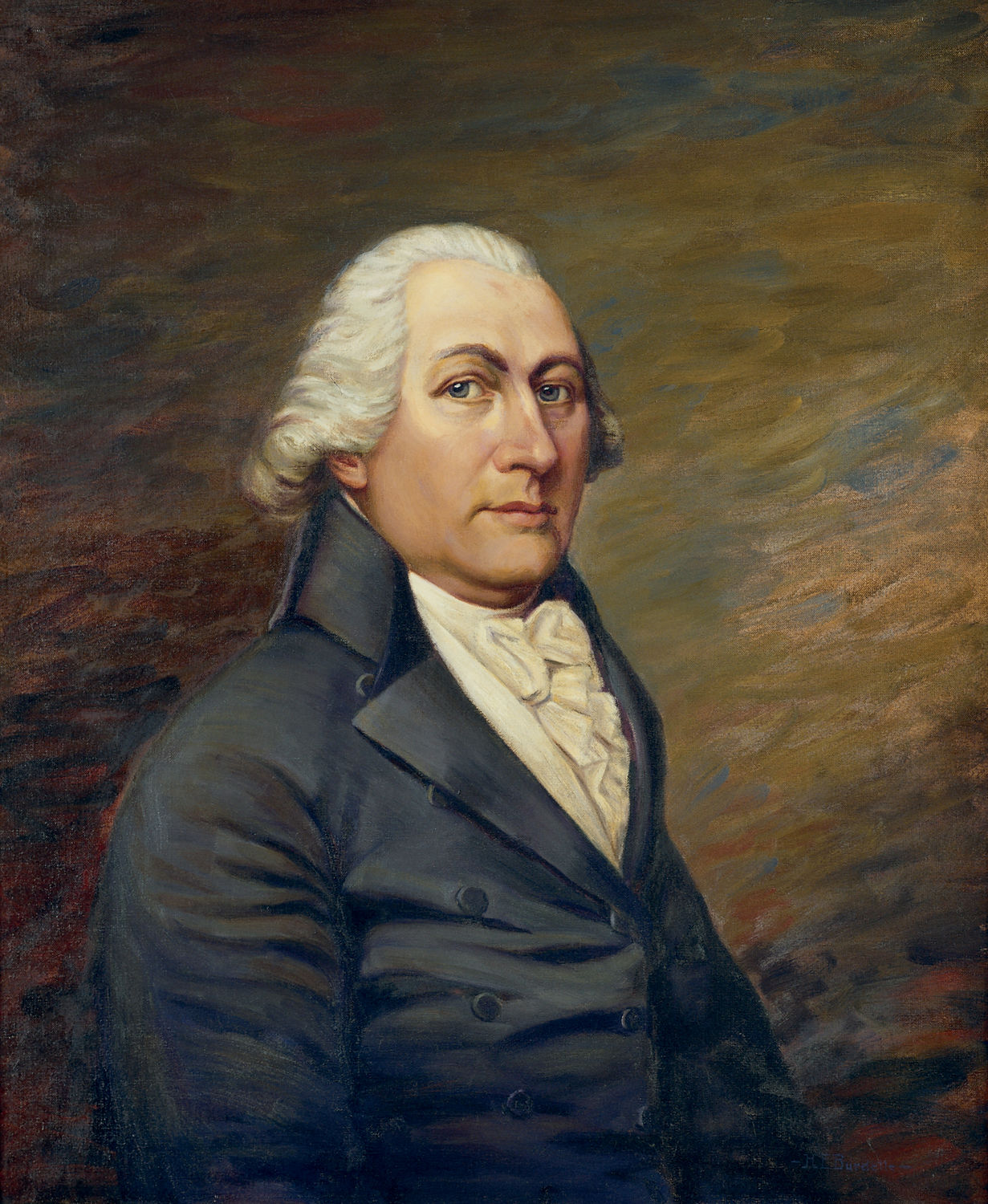
| Title | John Langdon |
| Artist/Maker | Hattie Elizabeth Burdette ( 1872 - 1955 ) |
| Date | 1916 |
| Medium | Oil on canvas |
| Dimensions | Sight: h. 29.25 x w. 24.25 in. (h. 74.295 x w. 61.595 cm)
Framed: h. 42.5 x w. 37 in. (h. 107.95 x w. 93.98 cm) |
| Credit Line | U.S. Senate Collection |
| Accession Number | 32.00023.000 |
In submitting a resolution in 1916 authorizing the commission of a portrait of John Langdon, Senator Jacob Gallinger of New Hampshire commented that, as the first president pro tempore of the Senate, “Langdon deserved some recognition on the part of the Senate of the United States.” [1] Artist Hattie Burdette, who was educated at Washington, D.C.-area art schools, was selected to paint the portrait. Burdette’s likenesses of George Washington and General Lafayette had been exhibited in Paris at the French Colonial Exposition of 1931; other works by her were held by the Navy Department and by Washington and Lee University in Virginia. The artist also produced a number of informal charcoal character portraits of politicians, which were used for campaign purposes.
Burdette’s oil of John Langdon for the U.S. Capitol is believed to be based on an historic engraving of the senator by Samuel Sartain, after an 18th-century pastel by James Sharples, Sr. A notice in the Washington D.C. Sunday Star of October 15, 1916, described the completed portrait: “It is a strong face with well defined features, but kindly expression.” [2] The painting was accepted by the Joint Committee on the Library the same year.
1. Congressional Record (9 March 1916) vol. 53, pt. 4: 3808.
2. ”Notes of Art and Artists,” Washington, D.C. Sunday Star, 15 October 1916.
A Revolutionary- and Federal-era leader, New Hampshire native John Langdon was one of the first two senators from his state. Born in Portsmouth, he became a successful owner of seagoing merchant vessels, and he served as a member of the Continental Congress in 1775 and 1776. A year later, while Speaker of the New Hampshire house of representatives, he was credited with saving the colonial forces from disaster. Langdon personally financed the New Hampshire militia, making possible the defeat of the British at the Battle of Bennington. With General John Burgoyne's troops threatening from the west, the state lacked an adequate treasury to defend itself. At a troubled meeting of the state assembly, Langdon arose and pledged "$1,000 in hard money" and $3,000 in silver and saleable rum to create the necessary fund.
Langdon was chosen president of New Hampshire in 1785, was a delegate to the federal Constitutional Convention in 1787, and became governor of New Hampshire in 1788. Elected to the U.S. Senate from New Hampshire in 1788–the first session under the federal Constitution–he served until 1801 and has the distinction of being the first president pro tempore. From 1805 to 1809 he again served as governor of New Hampshire. Declining the Democratic-Republican nomination for the vice presidency in 1812, Langdon retired from politics. He died in Portsmouth in 1819.